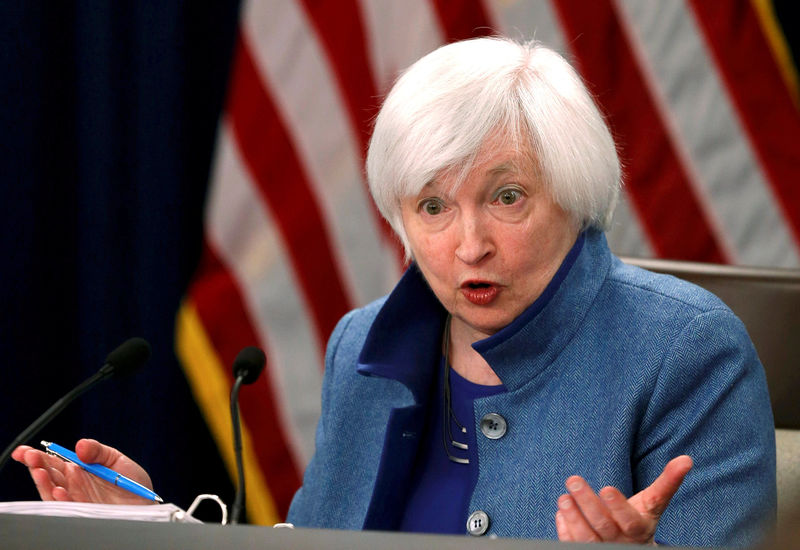By Lindsay Dunsmuir and Jason Lange
WASHINGTON (Reuters) - The Federal Reserve held interest rates steady on Wednesday in its first meeting since President Donald Trump took office, but painted a relatively upbeat picture of the U.S. economy that suggested it was on track to tighten monetary policy this year.
The U.S. central bank said job gains remained solid, inflation had increased and economic confidence was rising, although it gave no firm signal on the timing of its next rate move.
Fed policymakers are still awaiting clarity on the possible impact of Trump's economic policies.
"Measures of consumer and business sentiment have improved of late," the Fed said in a unanimous statement following a two-day policy meeting in which it left its benchmark interest rate in a range of 0.50 percent to 0.75 percent.
The Fed also highlighted that the unemployment rate, currently at 4.7 percent, was still hovering near its recent low.
Financial markets were little changed after the rate decision, while investors were still expecting the next rate increase to occur in June, according to Fed funds futures data compiled by the CME Group (NASDAQ:CME).
The Fed raised rates in December for only the second time in a decade and forecast three rate increases in 2017.
Fed Chair Janet Yellen recently underscored that, with the economy near full employment, the central bank risked a "nasty surprise" on inflation if it is too slow with rate hikes.
The Fed said in its statement that it still expects inflation to rise to its 2 percent target in the medium term, although it noted that inflation compensation was still low and long-term inflation expectations were little changed.
It did, however, indicate that the effects of weak oil prices had ended, something that will give it a "clean" read on inflation in the future. On Monday, the Commerce Department reported an uptick in inflation to 1.7 percent.
"The economy continues to chug along and sentiment has improved. The Fed does sound more confident about eventually getting to its 2 percent inflation target," said Brian Jacobsen, chief portfolio strategist at Wells Fargo (NYSE:WFC) Funds Management.
FISCAL POLICY UNCERTAINTY
Investors had all but ruled out a rate increase this week, given the uncertainty surrounding Trump's fiscal and trade policies and how they would affect the Fed's outlook.
Trump's promises on infrastructure spending, tax cuts, regulation rollbacks and a renegotiation of trade deals could quickly spur higher inflation, which may necessitate a faster pace of rate hikes.
The businessman-turned-politician has offered few specifics on his economic plans or a timeline for their rollout, while the announcement of policies viewed by many as protectionist and an immigration crackdown have caused market jitters in recent days.
"There is still uncertainty about fiscal policy, so the Fed is likely waiting for a bit more data and more certainty," said Tony Bedikian, head of global markets at Citizens Bank.
Earlier on Wednesday, data showed U.S. factory activity accelerated to more than a two-year high in January while a report by a payrolls processor showed U.S. private employers added 246,000 jobs in January, far above analysts' expectations.
The Labor Department is scheduled to release its closely-watched monthly jobs report for January on Friday. Yellen may also give a clearer signal on the Fed's thinking when she provides semi-annual testimony to Congress in mid-February.

There are seven more Fed policy meetings in 2017, with the next one scheduled for March 14-15.